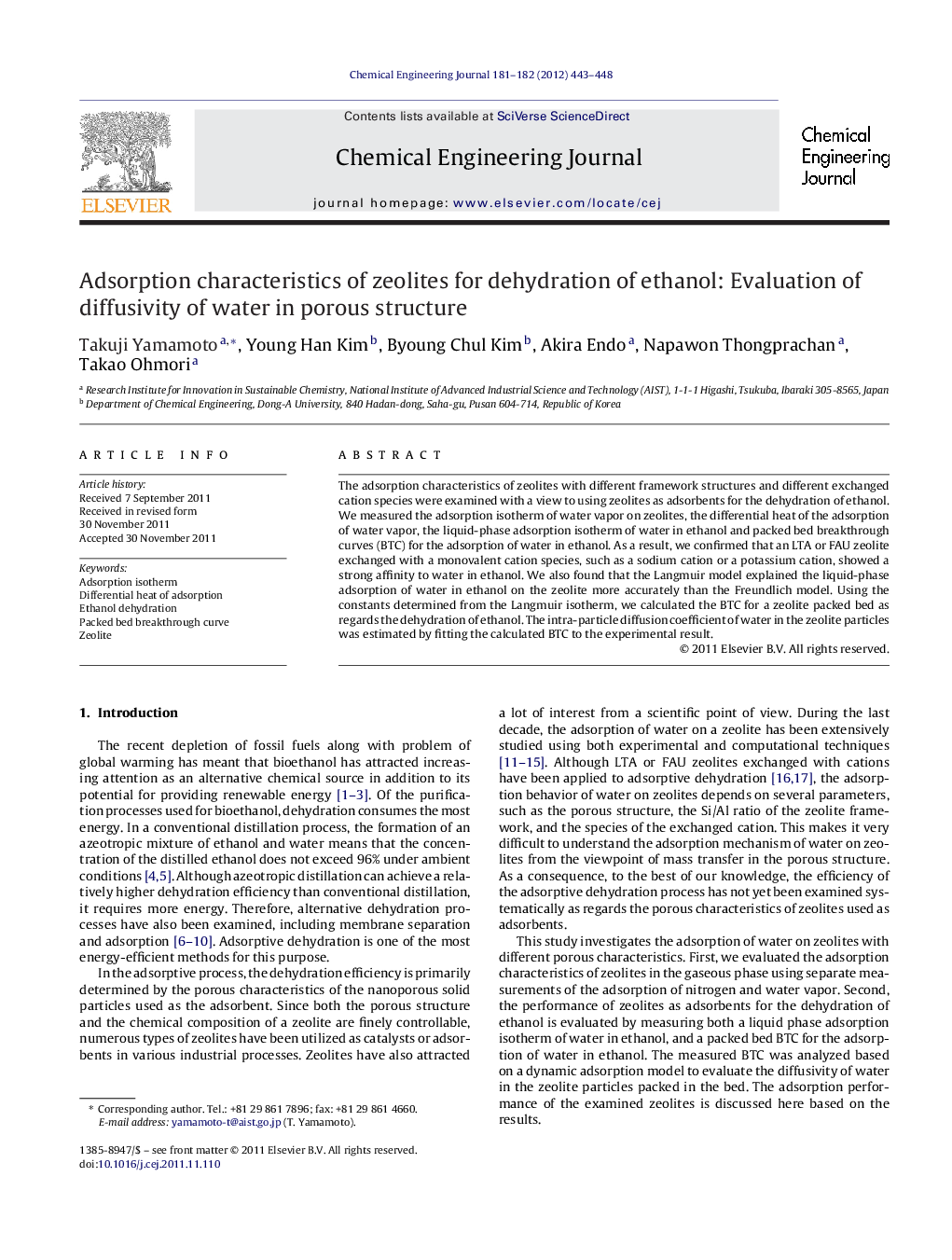| Article ID | Journal | Published Year | Pages | File Type |
|---|---|---|---|---|
| 150221 | Chemical Engineering Journal | 2012 | 6 Pages |
The adsorption characteristics of zeolites with different framework structures and different exchanged cation species were examined with a view to using zeolites as adsorbents for the dehydration of ethanol. We measured the adsorption isotherm of water vapor on zeolites, the differential heat of the adsorption of water vapor, the liquid-phase adsorption isotherm of water in ethanol and packed bed breakthrough curves (BTC) for the adsorption of water in ethanol. As a result, we confirmed that an LTA or FAU zeolite exchanged with a monovalent cation species, such as a sodium cation or a potassium cation, showed a strong affinity to water in ethanol. We also found that the Langmuir model explained the liquid-phase adsorption of water in ethanol on the zeolite more accurately than the Freundlich model. Using the constants determined from the Langmuir isotherm, we calculated the BTC for a zeolite packed bed as regards the dehydration of ethanol. The intra-particle diffusion coefficient of water in the zeolite particles was estimated by fitting the calculated BTC to the experimental result.
► Adsorption characteristics of zeolites as adsorbents for dehydration were examined. ► We measured the liquid-phase adsorption isotherm of water in ethanol. ► Packed bed breakthrough curves for adsorption of water in ethanol were also measured. ► We estimated the intra-particle diffusion coefficient of water in zeolite particles. ► FAU zeolite exchanged with a monovalent cation showed the largest capacity to water.
